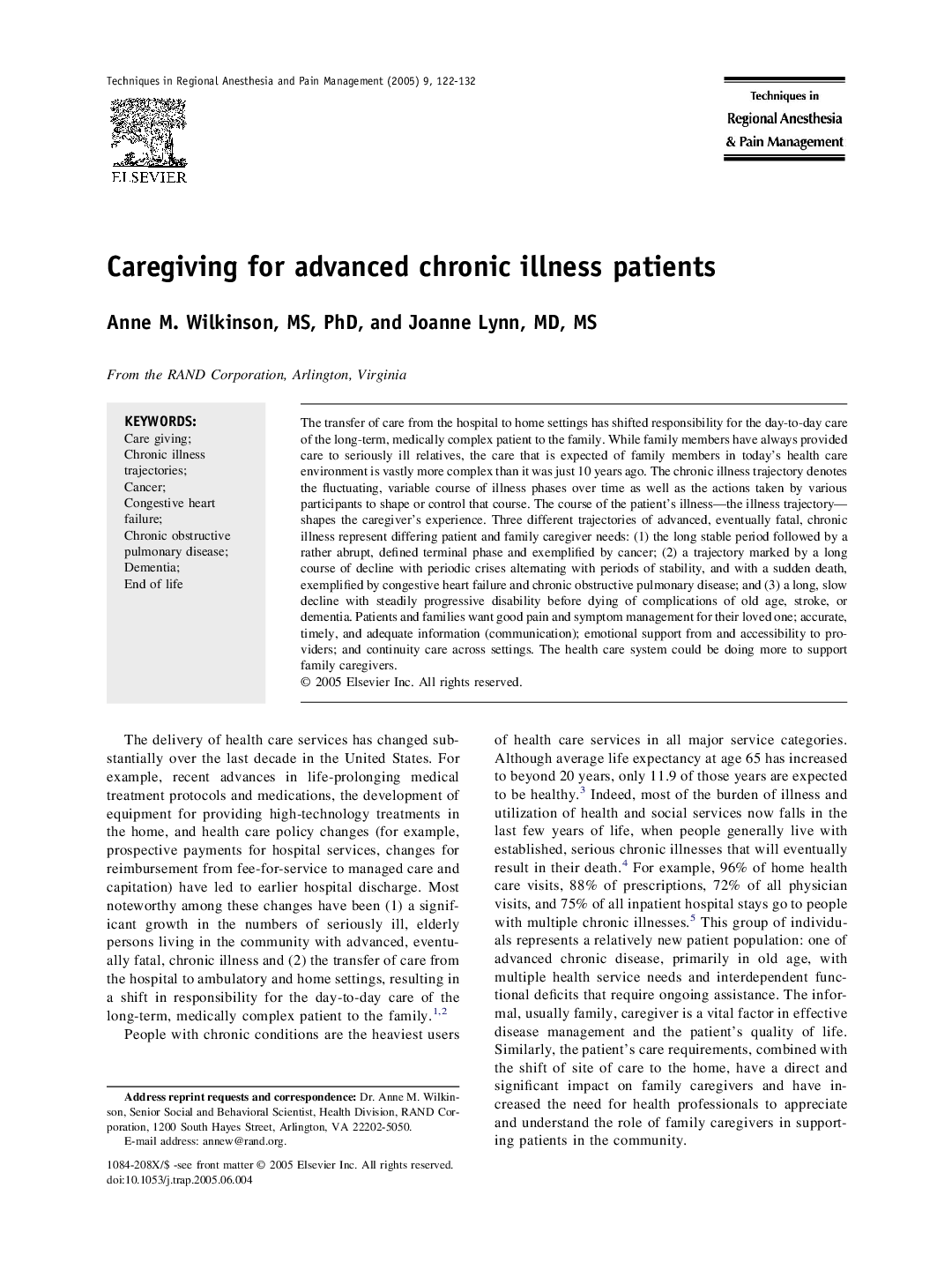| Article ID | Journal | Published Year | Pages | File Type |
|---|---|---|---|---|
| 9101971 | Techniques in Regional Anesthesia and Pain Management | 2005 | 11 Pages |
Abstract
The transfer of care from the hospital to home settings has shifted responsibility for the day-to-day care of the long-term, medically complex patient to the family. While family members have always provided care to seriously ill relatives, the care that is expected of family members in today's health care environment is vastly more complex than it was just 10 years ago. The chronic illness trajectory denotes the fluctuating, variable course of illness phases over time as well as the actions taken by various participants to shape or control that course. The course of the patient's illness-the illness trajectory-shapes the caregiver's experience. Three different trajectories of advanced, eventually fatal, chronic illness represent differing patient and family caregiver needs: (1) the long stable period followed by a rather abrupt, defined terminal phase and exemplified by cancer; (2) a trajectory marked by a long course of decline with periodic crises alternating with periods of stability, and with a sudden death, exemplified by congestive heart failure and chronic obstructive pulmonary disease; and (3) a long, slow decline with steadily progressive disability before dying of complications of old age, stroke, or dementia. Patients and families want good pain and symptom management for their loved one; accurate, timely, and adequate information (communication); emotional support from and accessibility to providers; and continuity care across settings. The health care system could be doing more to support family caregivers.
Keywords
Related Topics
Health Sciences
Medicine and Dentistry
Anesthesiology and Pain Medicine
Authors
Anne M. MS, PhD, Joanne MD, MS,
